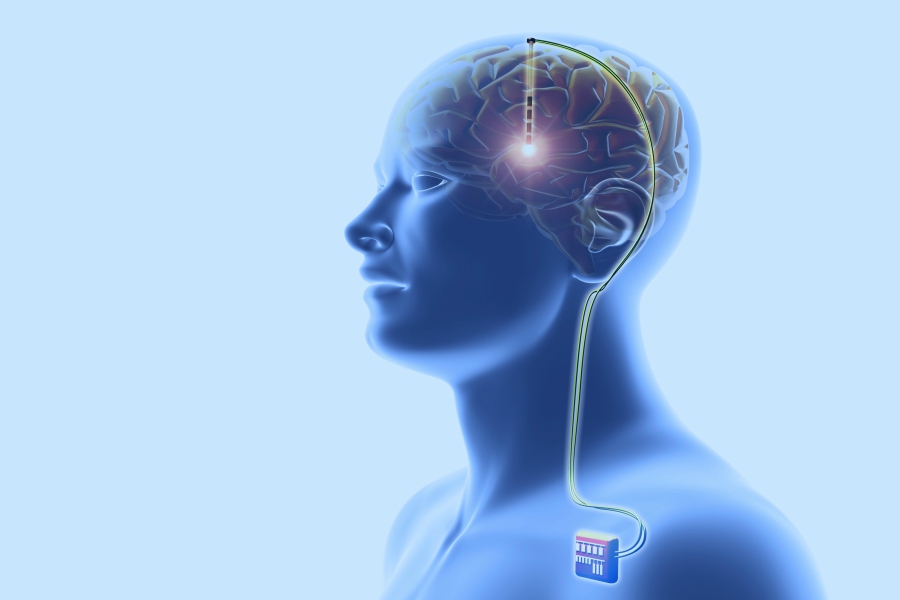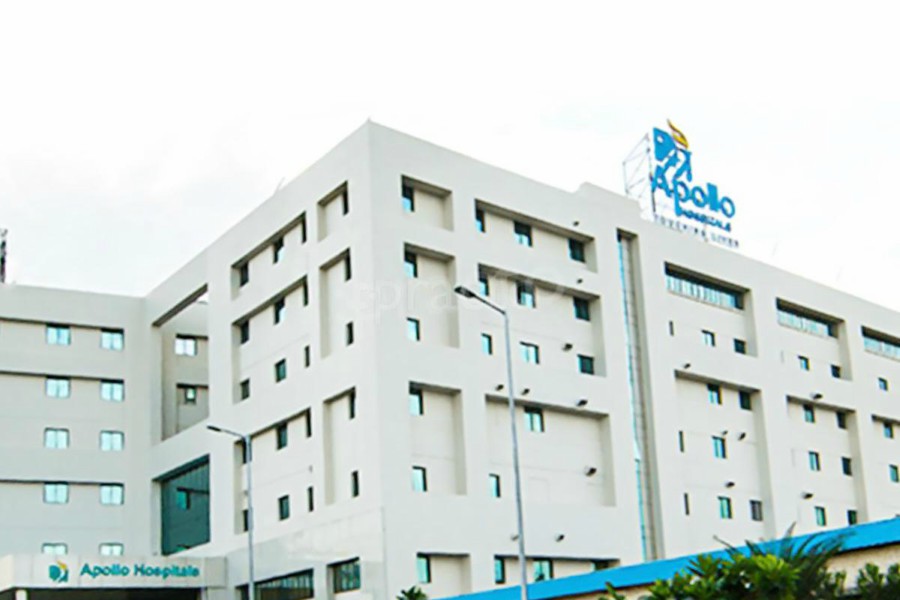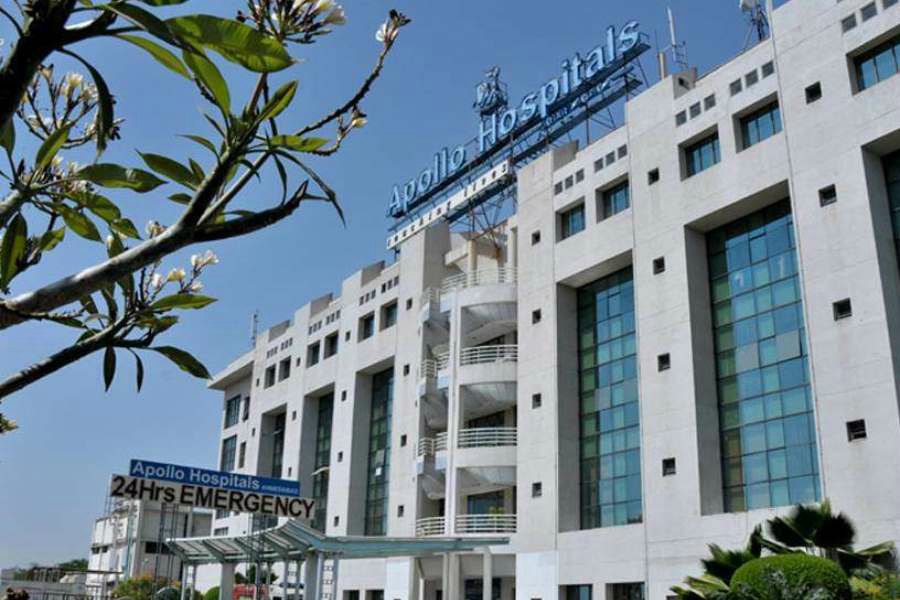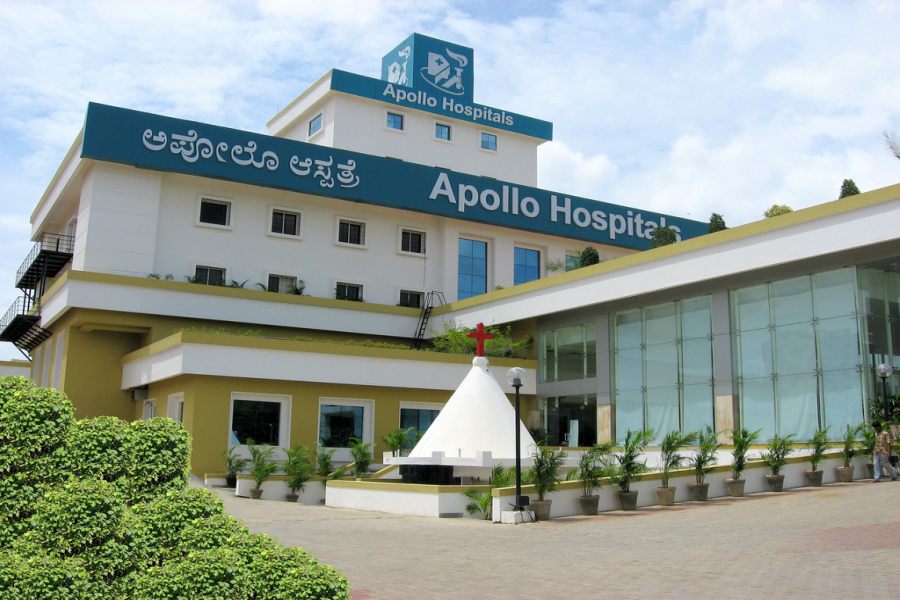
Overview
The brain in the human body acts by sending impulses to the different motor organs which move to regulate the body’s different functions. If the mechanism of generating and transferring impulse to the appropriate organs somehow becomes faulty and needs regulation, it is possible to provide external electrical stimuli to control, regulate, or generate the appropriate response. It is not a condition that can be treated fully; rather the symptoms can be abated for the time being.
The method of installing impulse generators in the brain to directly affect the impulses is known as Deep Brain Stimulationand the surgery to achieve that feat is known as Deep Brain Stimulation surgery.
Why it’s done
Every movement of our body is controlled by the impulses from the brain, and any issues in the total process of the passage of the impulse can give rise to uncontrolled movement and locomotion. Deep brain stimulation is given to patients who have problems originating due to some discrepancy in the impulse generation. The diseases which can be treated or rather, the symptoms can be halted for the time being is listed as;
• Dystonia
• Epilepsy
• Parkinson's disease
• Depression
• Huntington's disease
• Multiple sclerosis
• Stroke
• Tourette syndrome
• Traumatic brain injury
• Addiction
• Chronic pain
• Cluster headache
• Dementia
• Tremor
• Slowness
• Reduced muscle movement
• Problems in locomotor activities
Essentially, Deep Brain Stimulation is used to reduce the symptoms of a potential brain problem and minimize the uses of drugs that affect the brain.
Causes
Causes that may ultimately require a deep brain stimulation surgery can have its roots among several of the neurons or the neurological pathways present in the nervous system. As the brain is the collection of several neurons, any problem, even in a single cell, or in a pathway, could cause the brain to send out wrong signals to its destination. Even a small disturbance in the structure could result in a neurological problem. The most common causes that may require deep brain stimulation are;
• Lifestyle-related causes
Persons with unregulated lifestyle have more chance of getting a neurological disease and needing deep brain stimulation surgery. According to the World Health Organization, optimal lifestyle choices like the ceasing of smoking or drinking, eating right, sleeping the right amount can reduce the chance problems in the brain. Moreover, hypertension and stress are considered to be a primary factor for brain-related problems.
• Infections
Some of the members of the bacterial and the viral kingdom can attack the brain and cause infection in several sites. The inflammation caused, in addition to the toxic products secreted by the bacteria, can affect the neural pathways of the brain, giving rise to symptoms which will need a deep brain stimulation surgery for correction.
• Genetics
It has been observed that some of the families or their descendants have a mutation in a gene that is responsible for a specific activity in the brain. Usually, these factors are different enzymes in the neurological pathway, which can give rise to symptoms, if somehow their activity is reduced or stopped. Proper genetic counseling can be done in these cases.
• Nutrition-related causes
The trace elements or the different nutrients are responsible for the total activity of the enzymes present in the brain. Malnutrition or the absence of a specific nutrient, important for the activities of the enzymes of the neural pathways, or required for the proper functioning of the cell, can cause the symptoms of neurological problems.
• Environmental influences
Living in a polluted environment can affect brain health. Especially, workers working in the asbestos industry or an environment of electronic instrument recycling, where the air is filled up with toxic materials like cadmium, silicon, nickel,etc. can give rise to brain problems in the workers. Also, living in an environment of constant exposure to electromagnetic waves can give rise to neurological disorders.
• Physical injuries
This is a rare but equally probable cause of the development of a neurological disorder. Sudden blow, to the head, blunt force trauma, or injuries to the spinal cord because of violent force due to accidents can necessitate the use of deep brain stimulation to correct the resultant symptoms.
SYMPTOMS
The symptoms that require deep brain stimulation for remediation are related to the faulty transfer of impulses in the patient. Thereby, the indications are generalized and do not point out any specific cause for the problem. The general symptoms that can make your surgeon consider a deep brain stimulation surgery are;
• Insistent or unexpected beginning of a headache
• A headache that shifts its location or different in its intensity
• Loss of feeling in the body
• No response to stimulation
• Weakness
• Damageof muscle strength
• Losing sight or double vision
• Loss of Memory
• Reduced cerebral ability
• Deficiency of synchronization
• Inflexibility of muscles
• Shivers and seizures
• pain in the back which can go to the feet, toes, or other parts of the body
• Muscle atrophy
• Incoherent speech
• Impairment of expression or understanding
• Loss of intellectual capacity
DIAGNOSIS
• Computed tomography scan or CT scan: This technique uses x-rays and different processing software to render a three-dimensional image of the body. This technique can be used in almost every organ of the bodyand produces a more informative image than a general x-ray.
• Electroencephalogram (EEG): This technique is used to detect the electrical activity of the brain and find out the presence of any problems.
• Magnetic resonance imaging (MRI): This technique uses magnets and computers to get a detailed image of the body, and can be used to detect abnormalities in almost any organ.
In addition, methods like PET, Myelogram, spinal tap etc can also be used for detection of the neural problems.
RISK FACTORS
In deep brain stimulation surgery, the brain is exposed, so a chance of risk remains. The complication that may occur after the surgery can be stated as:
• Seizure
• Confusion
• Difficulty thinking
• Stroke
• Hardware problems, such as a worn lead wire
• Brief ache and inflammation at the grafting site
• Infection
• Headache
POST-OPERATIVE CARE
• You may be shifted to a separate room for observation.
• Residual pain is normal and treatable by painkillers and antibiotics.
• The pulse generator will be activated in the doctor’s office.
• The stimulation can be controlled by using a remote control.
• The battery will be replaced by the surgeon in an outpatient procedure.
• The mild imbalance may persist for a few weeks.
• The doctor may suggest rest for 2-3 days after the operation.
TREATMENT
The sequence of action that the surgeon may give you to keep an eye on before and during the procedure can be stated as:
Before the treatment
The hospital workers will verify your case history, any sedative use, previous medical records, any allergies, etc. Then they will look for any complications in your pulse or blood pressure.
Before the operation, you will be given anesthesia at the position of the slit or will be made fully senseless according to the type of surgery preferred by the physician. Any metal and personal items like jewelry, piercings, dentures, contact lenses will have to be put outfor the time of the surgery.Any hair may be shaved from the site of operation. The surgical team may give you antibiotics and pain-relievers to counteract the pain.
During the procedure
• At the operative table, you will be laid in an upward-facing position.
• Local or general anesthesia will be given at the site of infection.
• Your head will be fixed in a head frame.
• The surgeon will implant a lead into the specific area of the brain, double for two sides.
• A wire will run to the pulse generator, which will be surgically placed near the collar bone.
• After the surgery, the incision will be closed.
FACTORS AFFECTING COST
The costs for the surgery depend on the below factors:
• The type of battery (rechargeable or non-rechargeable)
• The kind of hospital chosen (government or private)
• The type of room chosen (semi-private or single)
FAQ
Yes, it is one of the chief invasive surgeries and needs a proficient team of medical personnel for completion.
It can take up to three to five days provided that the electrodes are correctly placed and there is no post-operative complication.
It is not sensible to refuse treatment as it may lead to permanent neural and motor damage.
It is a minimal risk surgery. A mere 2.5% patients are aflficted with skin infections post the surgery. Only 0.6% of the cases suffer temporary issues. This data shows how safe the procedure is.


 Best Hospitals
Best Hospitals












